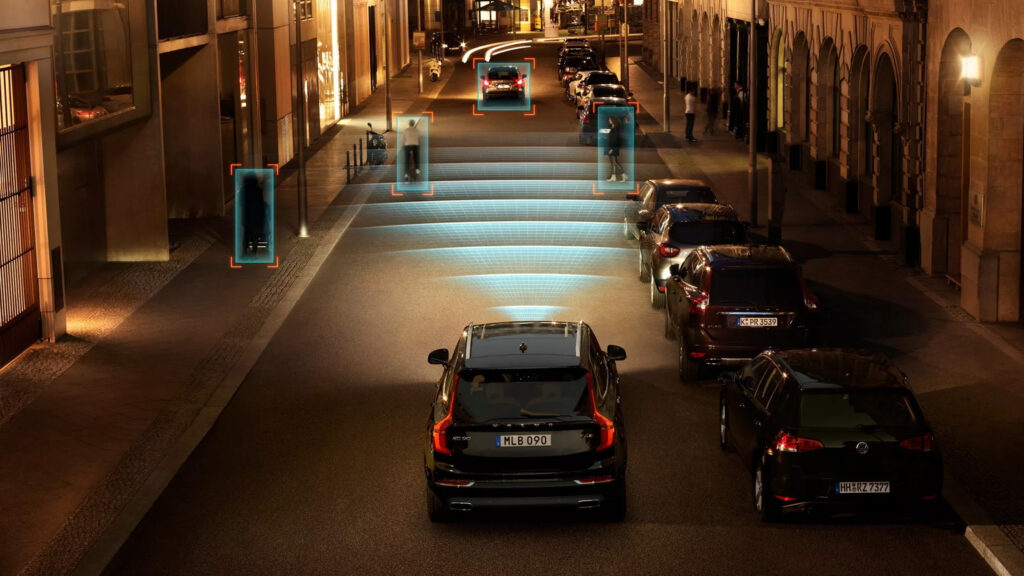- By 2029, automatic emergency braking will be required by law in the United States for all new vehicles under 4,500 kg (10,000 lbs).
- New regulations require vehicles to be able to stop and avoid a car in front at speeds of up to 62 mph (100 km/h).
- US government estimates measures will save 362 lives annually; NHTSA puts the cost at $82 per car
According to the U.S. government, automatic emergency braking technology will be mandatory in new vehicles before the end of the decade. This could save nearly 400 lives and prevent thousands of injuries each year.
var adpushup = window.adpushup = window.adpushup || {que:[]}; adpushup.que.push(function() { if (adpushup.config.platform !== “DESKTOP”){ adpushup.triggerAd(“4d84e4c9-9937-4f84-82c0-c94544ee6f2a”); } else{ adpushup.triggerAd(” 6a782b01-facb-45f3-a88f-ddf1b1f97657″); } });
Most new cars sold in North America already have automatic emergency braking (AEB), but some do not, and there are no rules governing the performance of the systems in vehicles equipped with it. However, this will change by September 2029, when NHTSA’s new technical guidelines come into effect. These regulations require AEB to be installed on all new passenger vehicles sold in the United States, those weighing at least 10,000 lbs (4,500 kg).
Related: US makes automatic emergency braking mandatory for all passenger vehicles
They also require an AEB system to allow a car to stop at speeds of up to 62 mph (100 km/h), both day and night, and avoid a collision with another vehicle in front of it. The car must also automatically brake if it collides with another vehicle in front at speeds of up to 90 mph (145 km/h), and be able to detect and avoid pedestrians at speeds of up to 45 mph (72 km/h).
window._taboola = window._taboola || []; _taboola.push({ mode: ‘thumbnails-a-mid’, container: ‘taboola-mid-article’, placement: ‘Mid Article’, target_type: ‘mix’ });
window._taboola = window._taboola || []; _taboola.push({ mode: ‘thumbnails-oc-2×1’, container: ‘taboola-mid-article-thumbnails-organic’, placement: ‘Mid Article Thumbnails Organic’, target_type: ‘mix’ });
The U.S. government believes that introducing and regulating AEB technology could reduce the millions of rear-end collisions that occur nationwide each year, save 362 lives and prevent 24,000 injuries annually, not to mention saving drivers a fortune in medical costs , insurance bills and vehicle repairs could save.
The NHTSA said police received reports of nearly 2.2 million rear-end collisions in 2019, resulting in 574,000 injuries and 1,798 deaths. But that’s nothing compared to the shocking 6,272 fatal pedestrian accidents that same year, 65 percent of which resulted from people being hit by the front of a moving car.

Aside from reducing the workload for towing companies, body shops and nurses, the only obvious downside is that some cars require additional hardware to overcome this challenge. The NHTSA estimates the rule will add a modest $84 to the price of a new car, but leaves automakers to choose exactly which sensors to use.
However, in its test of 17 vehicles, including a BMW iX, a Ford F-150 Lightning and a Hyundai Ioniq 5, only the 2023 Toyota Corolla, which uses both radar and camera technology, was judged to meet the required standards. While large car manufacturers have until September 1, 2029 to comply with the new legislation, small series companies will receive an additional one-year grace period.
var adpushup = window.adpushup = window.adpushup || {que:[]}; adpushup.que.push(function() { if (adpushup.config.platform !== “DESKTOP”){ adpushup.triggerAd(“5646c171-cb6e-4e2c-8440-49013ca72758″); } else{ adpushup.triggerAd(” e7c4c913-3924-4b2d-9279-6c00984dd130″); } });
